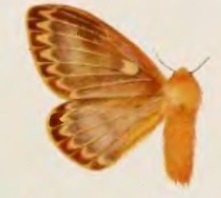
Sydney is the capital city of the state of New South Wales and the most populous city in Australia. Located on Australia's east coast, the metropolis surrounds Sydney Harbour and extends about 80 km from the Pacific Ocean in the east to the Blue Mountains in the west, and about 80 km from the Ku-ring-gai Chase National Park and the Hawkesbury River in the north and north-west, to the Royal National Park and Macarthur in the south and south-west. Greater Sydney consists of 658 suburbs, spread across 33 local government areas. Residents of the city are colloquially known as "Sydneysiders". The estimated population in June 2023 was 5,450,496, which is about 66% of the state's population. The city's nicknames include the "Emerald City" and the "Harbour City".

Queensland is a state in north-eastern Australia, the second-largest and third-most populous of the Australian states. It is bordered by the Northern Territory, South Australia and New South Wales to the west, south-west and south respectively. To the east, Queensland is bordered by the Coral Sea and the Pacific Ocean; to its north is the Torres Strait, separating the Australian mainland from Papua New Guinea, and the Gulf of Carpentaria to the north-west. With an area of 1,723,030 square kilometres (665,270 sq mi), Queensland is the world's sixth-largest subnational entity; it is larger than all but 16 countries. Due to its size, Queensland's geographical features and climates are diverse, including tropical rainforests, rivers, coral reefs, mountain ranges and sandy beaches in its tropical and sub-tropical coastal regions, as well as deserts and savanna in the semi-arid and desert climatic regions of its interior.

The peach blossom is a moth of the family Drepanidae. It was first described by Carl Linnaeus in his 1758 10th edition of Systema Naturae.

Australia, officially the Commonwealth of Australia, is a sovereign country comprising the mainland of the Australian continent, the island of Tasmania, and numerous smaller islands. Australia is the largest country by area in Oceania and the world's sixth-largest country. Australia is the oldest, flattest, and driest inhabited continent, with the least fertile soils. It is a megadiverse country, and its size gives it a wide variety of landscapes and climates, with deserts in the centre, tropical rainforests in the north-east, tropical savannas in the north, and mountain ranges in the south-east.

Australothis is a genus of moths of the family Noctuidae.

Enispa is a genus of moths of the family Erebidae. The genus was erected by Francis Walker in 1866.
Eupalindia is a genus of moths of the family Erebidae. The genus was described by William Schaus in 1914.
Lophocoleus is a genus of moths of the family Erebidae. The genus was erected by Arthur Gardiner Butler in 1886. All of the species in this genus are found on Fiji.

Macapta is a genus of moths of the family Noctuidae.
Australothis exopisso is a species of moth of the family Noctuidae. It is endemic to the Northern Territory in Australia.

Chrysoritis nigricans, the dark opal, is a butterfly of the family Lycaenidae found only in South Africa.

Tylopsis is a genus of bush crickets in the subfamily Phaneropterinae and the monotypic tribe Tylopsidini. Species are found in mainland Europe, the Middle East and Africa.

Coenodomus is a genus of snout moths. It was described by Walsingham in 1888, and is known from India, Papua New Guinea, Bhutan, the Philippines, the United States, Indonesia, China, and Sri Lanka.
Coenodomus rubrescens is a species of snout moth in the genus Coenodomus. It is known from India.

Polythysana is a genus of moths in the family Saturniidae first described by Francis Walker in 1855.

Thyatira is a genus of moths belonging to the subfamily Thyatirinae of the Drepanidae. It was erected by Ferdinand Ochsenheimer in 1816.

Cotana is a genus of moths in the family Eupterotidae.

Cotana rubrescens is a moth in the family Eupterotidae. It was described by Francis Walker in 1865. It is found in New Guinea.

Eurybrachys is a genus of bugs in the family Eurybrachidae. First formally named in 1834 by French entomologist Félix Édouard Guérin-Méneville, Eurybrachys is the type genus of the family Eurybrachidae. The spelling Eurybrachis, by the author, is considered an unaccepted orthographic variant. Species in this genus occur in Asia.
















